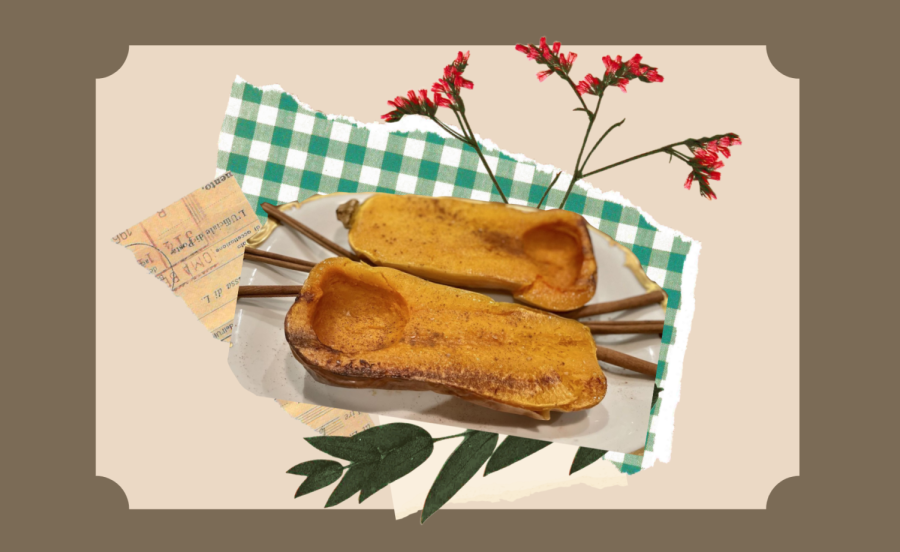
Squash your depression and anxiety
When Bridget Jones got dumped, she indulged in chocolates and ice cream and, in between sobs, drank all the red wine she could because that’s what we humans do when we’re sad. Of course, she’s a character in the 2001 romcom, “Bridget Jones’s Diary,” but she reflects our (very real) instinct to indulge when we’re feeling down. We feed our hungry stomachs, attempting to fill our empty hearts.
The thing is, food can actually help your feelings if you pick the right foods and don’t overdo it.
See, there’s a science behind food cravings. If understood correctly, it will absolutely boost your mood, improve your concentration and relieve your stress. Does that sound like the cure you’ve been looking for? All you have to do is sit down and eat it.
Depression and anxiety can seriously impact your academic and social life as a college student.
Depression is a mood disorder characterized by persistent feelings of sadness, lack of motivation, and loss of interest, whereas anxiety is a mental disorder that causes ongoing feelings of distress and worry that interfere with everyday activities.
“Up to 44% of college students reported having symptoms of depression and anxiety,” according to Mayo Clinic Health Services.
Luckily, you can take steps to heal your mental health in your own kitchen. Food plays a critical role in the upkeep of your body; dietary patterns even affect brain health because they can cause bodily inflammation.
“Persistent, chronic inflammation…can lead to depression and anxiety issues,” Drew Ramsey, M.D. wrote in “Eat to Beat Depression and Anxiety.” “The cure is to eat more foods with anti-inflammatory properties. Such foods include fish, which are high in omega-3 fatty acids (also contained in olive oil); bananas, sweet potatoes and butternut squash, which are high in potassium; nuts, which are high in magnesium; and dark chocolate, which possesses extremely high antioxidant properties.”
Sometimes a quick and easy comfort food, like Bridget’s chocolates and ice cream, poses a temptation that you just can’t say no to, especially if you’re grief-stricken or simply unmotivated. But self-soothing doesn’t have to have any negative consequences.
Here’s a healthy recipe that will not only indulge your sweet tooth, but also provide you with the emotional satisfaction you really crave.
Butternut squash is not only a versatile and delicious legume, but also an ingredient chock-full of nutritional benefits. High in vitamin E and beta-carotene, butternut squash can help prevent Alzheimer’s disease and lung cancer, according to PubMed Central, a database of the National Institute of Health. Moreover, the anti-inflammatory antioxidants that lift your spirits and reduce mental distress are present in this tender gourd.
While butternut squash is very easy to roast in halves, you can also chop it up and add it to stews, blend it in soups, substitute it for potatoes (fries or mashed) and even add it to sweet treats like pie in place of pumpkin.
If you have extra butternut squash leftover from this recipe, you can make a quick soup by mixing it in a blender with at least 2 cups of vegetable (or chicken) broth, spices, to taste (like cinnamon, nutmeg, pumpkin pie), ½ teaspoon of salt, pepper, 1 tablespoon of maple syrup, and 1 caramelized onion (chop it up and sauté in a pan with salt and olive oil before adding to blender).
Cinnamon Roasted Butternut Squash:
Ingredients
1 butternut squash
olive oil
ground cinnamon
salt
Instructions:
Preheat the oven to 375 degrees.
Line a baking sheet with aluminum foil.
Rinse and dry the butternut squash, making sure to peel off the label/sticker if there is one.
Using a meat cleaver, or the heaviest chef’s knife you have, slice the squash lengthwise, down the middle. Be careful to keep your fingers behind the blade. Butternut squash are tough so it’s easy for the knife to slip especially if it’s not as sharp as it could be.
Coat the flesh side of the butternut squash, using oil spray or a brush. Place the squash flesh-side-down on the baking sheet.
Roast for 50 minutes to 1 hour, or so, until soft and browned around the edges. You may need to leave it in the oven longer if the squash is still hard.
Once you have removed the squash from the oven, season it generously with cinnamon and a dash of salt. You can experiment with nutmeg, cardamom, pumpkin pie spice, and maybe even a little bit of brown sugar, to your taste. Let it cool for 5-10 minutes, then dig in.
Bon Appetit!
https://csulauniversitytimes.com/cooking-to-cure/
2022-09-19 02:56:22Z
CBMiMWh0dHBzOi8vY3N1bGF1bml2ZXJzaXR5dGltZXMuY29tL2Nvb2tpbmctdG8tY3VyZS_SAQA
Bagikan Berita Ini

















0 Response to "Cooking to Cure – University Times - CSULA University Times"
Post a Comment